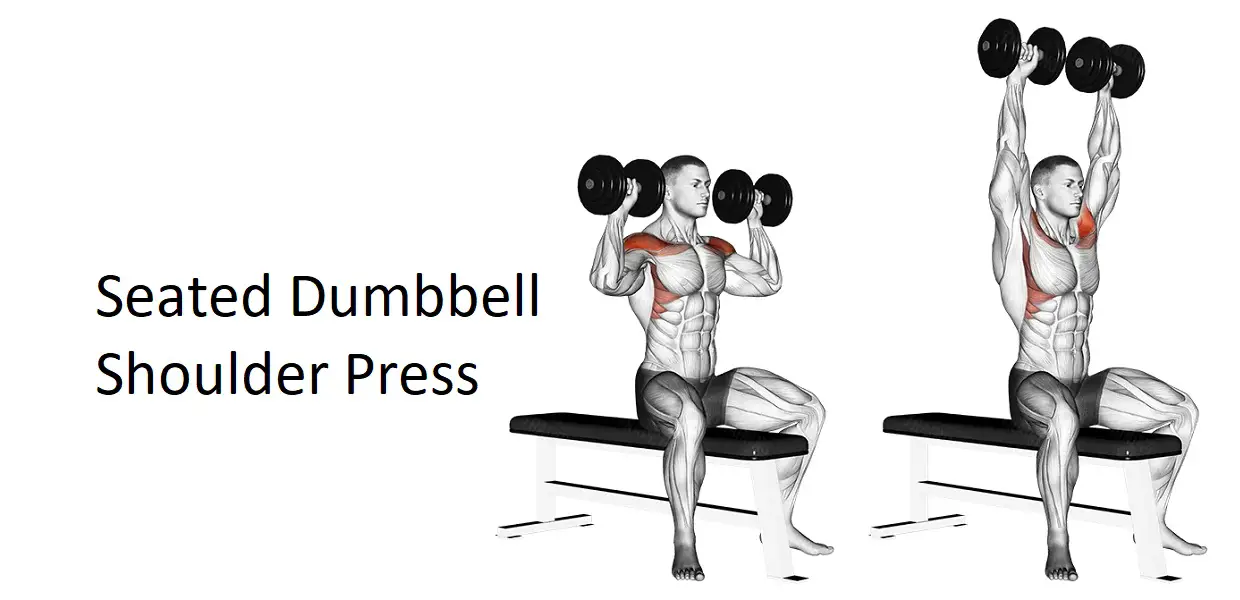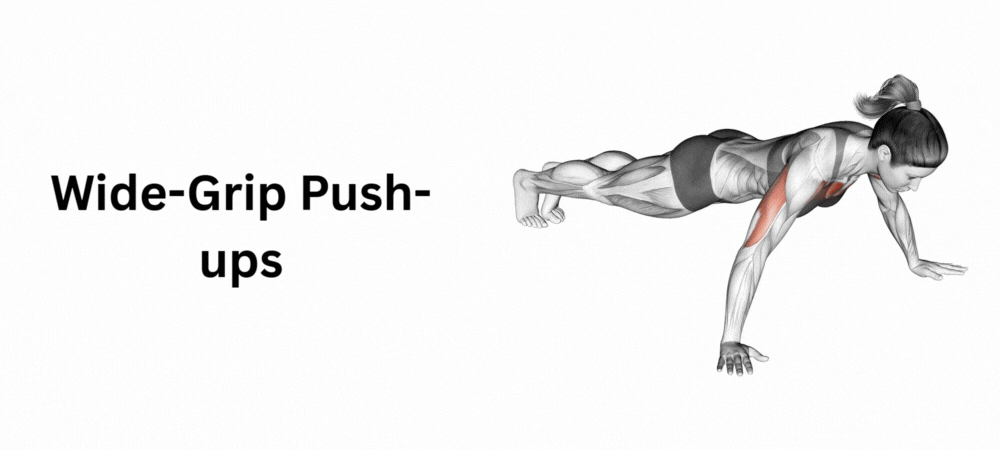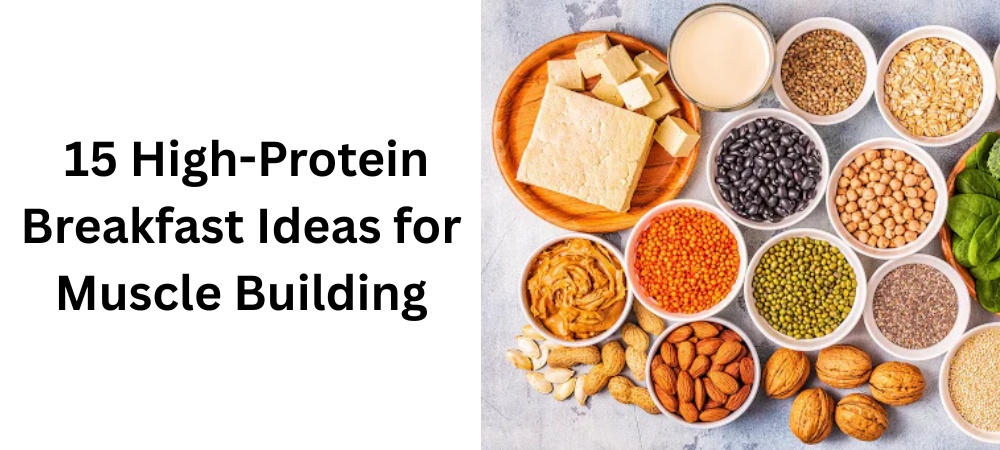The Seated Dumbbell Shoulder Press is a compound exercise that primarily targets the shoulder muscles while also engaging the triceps and upper chest. In this comprehensive guide, we’ll explore the correct technique, benefits, variations, and other essential details associated with the Seated Dumbbell Shoulder Press.
Instructions
Setup:
- Seat Adjustment: Sit on a sturdy bench with a backrest that provides support to your lower back. Adjust the seat height so that your feet are flat on the ground.
- Dumbbell Selection: Choose a pair of dumbbells of appropriate weight that allows you to perform the exercise with proper form and control.
Execution:
- Starting Position: Hold a dumbbell in each hand at shoulder height with your palms facing forward. Keep your elbows bent and in line with your shoulders.
- Pressing Motion: Exhale as you press the dumbbells upward until your arms are fully extended overhead. Keep your core engaged and avoid arching your back excessively.
- Peak Contraction: Pause briefly at the top of the movement, ensuring that your arms are fully extended without locking out your elbows. Feel the contraction in your shoulder muscles.
- Lowering Phase: Inhale as you lower the dumbbells back to the starting position under control. Keep your elbows slightly bent throughout the movement to maintain tension on the shoulder muscles.
- Repeat: Perform the desired number of repetitions with proper form and control.
Tips:
- Maintain a neutral spine throughout the exercise by keeping your chest lifted and your shoulders pulled back.
- Avoid using momentum to lift the dumbbells. Focus on controlled, deliberate movements.
- Keep your wrists straight and avoid excessive bending or flexing during the exercise.
Benefits
- Shoulder Strength: The Seated Dumbbell Shoulder Press is an effective exercise for developing strength and muscle mass in the deltoid muscles, particularly the anterior (front) and medial (side) heads.
- Functional Strength: This exercise mimics real-world pushing movements, making it beneficial for improving overall upper body strength and function.
- Muscle Balance: By using dumbbells, the Seated Dumbbell Shoulder Press helps address muscle imbalances between the left and right sides of the body, promoting symmetry and balance.
- Joint Stability: Performing the exercise in a seated position provides stability to the lower back and core, allowing you to focus on isolating the shoulder muscles without compensation from other muscle groups.
Muscles worked in Seated Dumbbell Shoulder Press
The Seated Dumbbell Shoulder Press primarily targets the deltoid muscles of the shoulders, specifically the anterior (front) and medial (side) heads. Additionally, it engages several other muscles to provide stability and support throughout the movement. Here are the main muscles worked during the Seated Dumbbell Shoulder Press:
- Deltoids (Anterior and Medial Heads): The deltoid muscles are responsible for lifting the arms overhead. The anterior head of the deltoids is particularly engaged during the pressing motion, while the medial head helps stabilize the arms throughout the movement.
- Triceps Brachii: The triceps muscles, located on the back of the upper arms, assist in extending the elbows to push the dumbbells overhead. They work synergistically with the deltoids to complete the pressing motion.
- Trapezius (Upper Fibers): The upper fibers of the trapezius muscles help stabilize the shoulders and provide support during the pressing motion. They work to keep the shoulders in a proper position and prevent excessive elevation or shrugging.
- Serratus Anterior: The serratus anterior muscles, located on the sides of the chest, help stabilize the scapulae (shoulder blades) and assist in the upward movement of the arms. They play a role in maintaining proper shoulder mechanics during the exercise.
- Rotator Cuff Muscles: The rotator cuff muscles, including the supraspinatus, infraspinatus, teres minor, and subscapularis, provide stability to the shoulder joint and help control the movement of the humerus (upper arm bone) during the shoulder press.
- Core Muscles: The muscles of the core, including the rectus abdominis, obliques, and transverse abdominis, engage to stabilize the torso and maintain proper posture throughout the exercise. A strong core helps prevent excessive arching of the lower back and promotes overall stability during the seated shoulder press.
Overall, the Seated Dumbbell Shoulder Press is an effective compound exercise that targets the deltoid muscles while also engaging several other muscles of the upper body and core to provide stability and support during the movement.
Alternate names for Seated Dumbbell Shoulder Press:
- Seated Dumbbell Press
- Dumbbell Overhead Press (Seated)
- Seated Dumbbell Military Press
- Seated Dumbbell Shoulder Lift
Variations
- Alternating Dumbbell Shoulder Press: Perform the exercise by pressing one dumbbell at a time while keeping the other arm in the starting position. This variation helps to increase stability and balance.
- Arnold Press: Rotate the palms of the hands as you press the dumbbells upward, starting with a neutral grip and ending with a pronated grip at the top of the movement. This variation targets different areas of the shoulder muscles.
- Seated Single-Arm Dumbbell Shoulder Press: Perform the exercise with one arm at a time while seated, allowing you to focus on each shoulder independently and address muscle imbalances.
- Smith Machine Shoulder Press: Perform the shoulder press using a Smith machine for added stability and control, especially for beginners or those with limited core strength.
Conclusion
The Seated Dumbbell Shoulder Press is a versatile and effective exercise for developing strength, muscle mass, and stability in the shoulder muscles. By mastering the correct technique and incorporating variations into your workout routine, you can maximize the benefits of this compound exercise for overall upper body strength and function.








